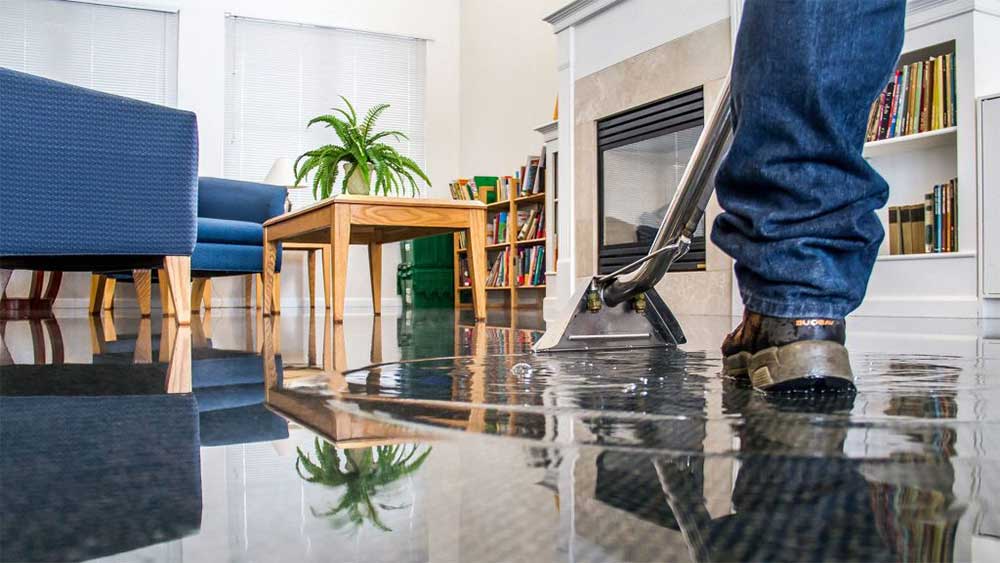Do's as well as Don'ts Throughout Water Damages Emergency Situations.
Do's as well as Don'ts Throughout Water Damages Emergency Situations.
Blog Article
The publisher is making a number of great points on Preventing Fires and Water Damage In Your Home as a whole in the content just below.

Water provides life, water intrusion on parts where it's not meant to be can result in damages. If the water soaks right into your structure, it can peel off away surface areas and erode the structure. Mold and mildew and also mold likewise flourish in a wet setting, which can be dangerous for your health and wellness. Houses with water damage smell stuffy and old.
Water can come from numerous resources such as tropical storms, floodings, ruptured pipes, leakages, and sewage system issues. In case you experience water damage, it would certainly be excellent to understand some safety precautions. Below are a couple of standards on exactly how to deal with water damages.
Do Prioritize House Insurance Insurance Coverage
Water damage from flooding as a result of heavy winds is seasonal. You can also experience an unexpected flood when a defective pipe suddenly bursts right into your house. It would certainly be best to have house insurance coverage that covers both disasters such as all-natural calamities, and also emergency situations like broken plumbing.
Do Not Forget to Shut Off Energies
This cuts off power to your entire residence, protecting against electrical shocks when water comes in as it is a conductor. Don't fail to remember to turn off the primary water line valve.
Do Keep Proactive as well as Heed Climate Signals
Storm floodings can be really uncertain. Remain positive and prepared if there is a background of flooding in your community. If you live near a creek, lake, or river , pay attention to evacuation cautions. Get valuables from the very beginning and also cellar, after that put them on the highest feasible level. Doing so minimizes prospective residential or commercial property damage.
Don't Disregard the Roofing System
Prior to the climate transforms terrible, make sure you have a roofing assessment. As a matter of fact, it would certainly be prudent to receive this service every year as it can minimize complicated problems. If there are no holes and leakages in your roof covering, you can prevent rain damage. Your roofing contractor will certainly likewise deal with damaged seamless gutters or any other indicators of weakening. This will certainly protect against water from moving down your walls and soaking your ceiling.
Do Focus On Little Leaks
A burst pipeline does not take place over night. Usually, there are red flags that show you have actually weakened pipes in your home. You might observe gurgling paint, peeling wallpaper, water touches, water spots, or leaking audios behind the walls. Ultimately, this pipe will burst. Ideally, you should not wait for things to rise. Have your plumbing fixed before it leads to massive damages.
Don't Panic in Case of a Ruptured Pipeline
When it comes to water damage, timing is essential. Hence, if a pipeline bursts in your residence, immediately shut off your primary water valve to reduce off the resource. Call a reputable water damage restoration specialist for help.
Water gives life, water intrusion on components where it's not supposed to be can result in damage. Residences with water damage scent stuffy and old.
Water damages from flooding charges to hefty winds is seasonal. You might observe bubbling paint, peeling wallpaper, water touches, water spots, or dripping noises behind the wall surfaces. When it comes to water damage, timing is vital.
Some Do's & Don't When Dealing with a Water Damage
DO:
Make sure the water source has been eliminated. Contact a plumber if needed. Turn off circuit breakers supplying electricity to wet areas and unplug any electronics that are on wet carpet or surfaces Remove small furniture items Remove as much excess water as possible by mopping or blotting; Use WHITE towels to blot wet carpeting Wipe water from wooden furniture after removing anything on it Remove and prop up wet upholstery cushions for even drying (check for any bleeding) Pin up curtains or furniture skirts if needed Place aluminum foil, saucers or wood blocks between furniture legs and wet carpet Turn on air conditioning for maximum drying in winter and open windows in the summer Open any drawers and cabinets affected for complete drying but do not force them open Remove any valuable art objects or paintings to a safe, dry place Open any suitcases or luggage that may have been affected to dry, preferably in sunlight Hang any fur or leather goods to dry at room temperature Punch small holes in sagging ceilings to relieve trapped water (don't forget to place pans beneath!); however, if the ceiling is sagging extremely low, stay out of the room and we'll take care of it DO NOT:
Leave wet fabrics in place; dry them as soon as possible Leave books, magazines or any other colored items on wet carpets or floor Use your household vacuum to remove water Use TV's or other electronics/appliances while standing on wet carpets or floors; especially not on wet concrete floors Turn on ceiling fixtures if the ceiling is wet Turn your heat up, unless instructed otherwise

Hopefully you liked our section about Fire And Water Damage Prevention. Thanks a lot for taking time to read through our blog. Sharing is nice. You never know, you may be doing someone a favor. Thank-you for taking the time to read it.
Report this page